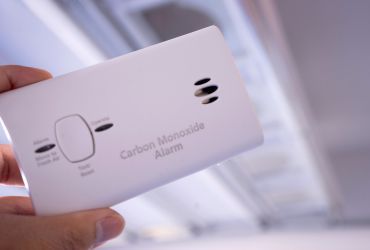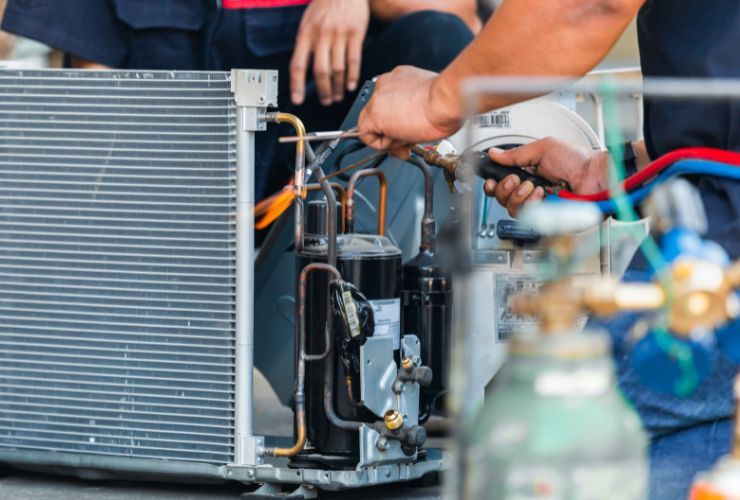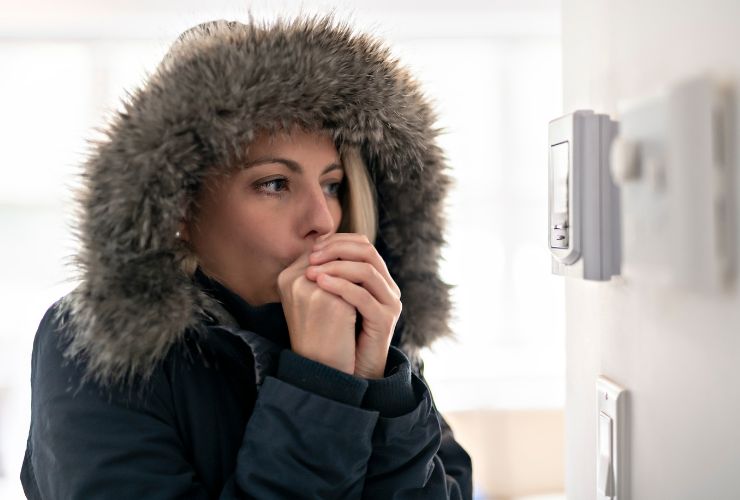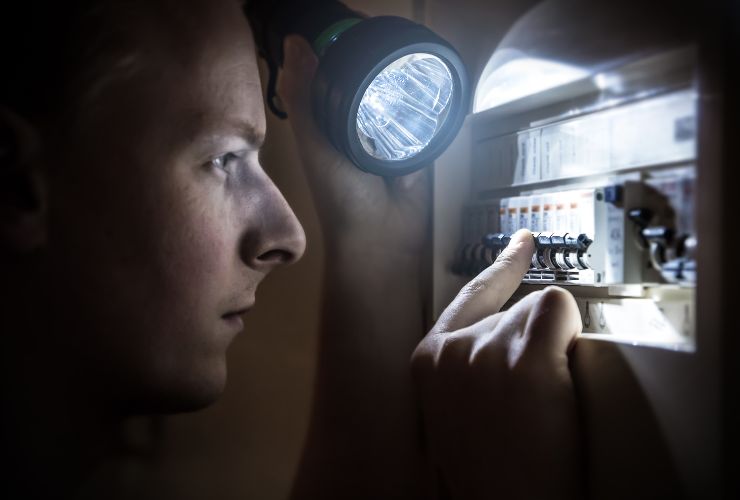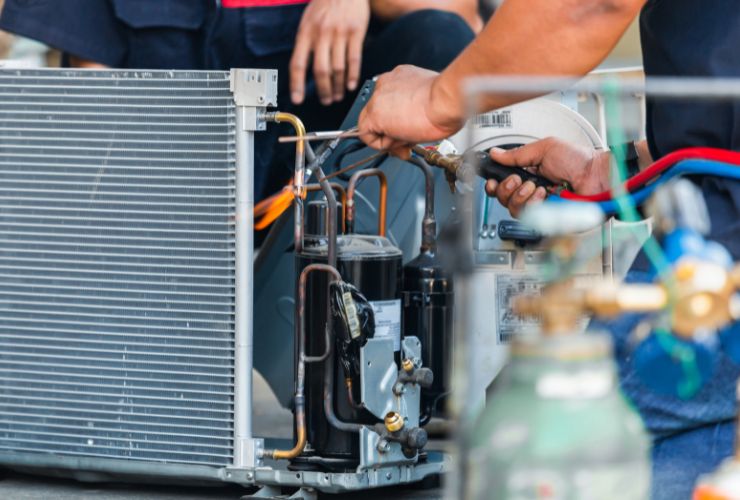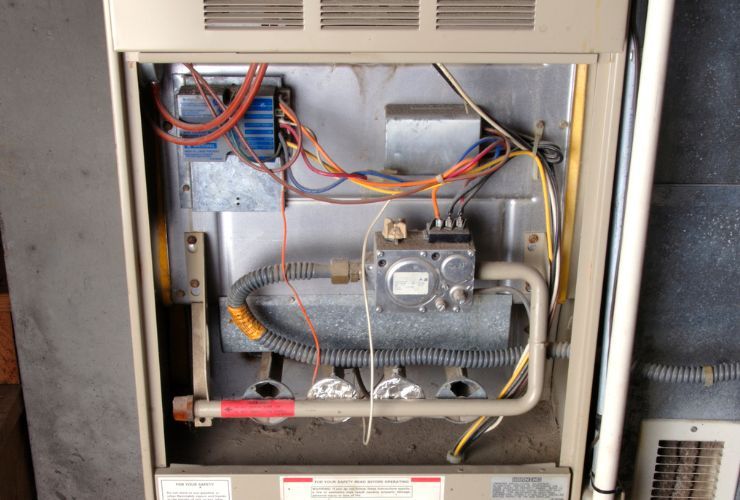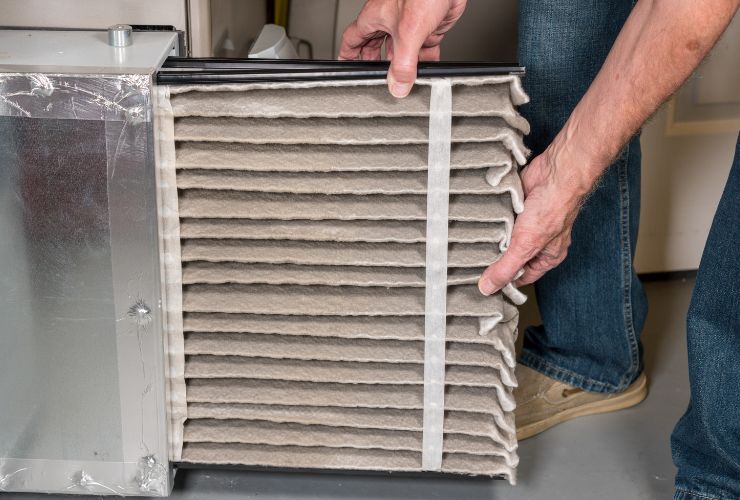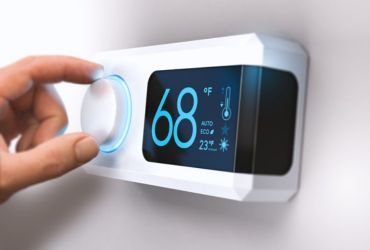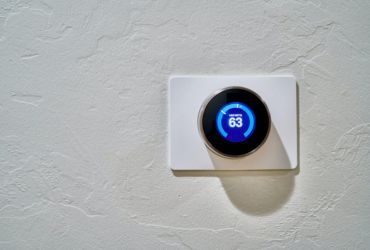Prevent Costly Repairs with These Summer AC Maintenance Tips
TL;DR: Regular AC maintenance is key to keeping your system efficient and reliable. Start by changing/cleaning air filters for better cooling performance and air quality. Clean the outdoor unit to prevent airflow issues. Check and seal ductwork to avoid energy losses. Upgrade to a programmable or smart thermostat for enhanced control and savings. Maintain vents and registers for improved airflow and cleanliness. Monitor refrigerant levels to prevent overworking your AC. Consider ductless mini-splits for efficient cooling in homes without ducts. Regularly monitor your system’s performance and consider upgrading to a more efficient model for long-term savings and comfort.
Take charge of your comfort with a proactive AC maintenance routine. Simple upkeep hacks extend your system’s life, boost efficiency, and save you money on energy costs. Keep your cool and your wallet happy!
In this article, we’ll show you how to prevent costly repairs with these summer AC maintenance tips. From simple DIY tasks to professional maintenance checks, we will cover everything you need to know to keep your AC running smoothly and efficiently all season long.
Keep Filters Clean for More Power
Change or wash the air filters in your HVAC system, as they play a vital role in ensuring better cooling performance, enhanced efficiency, extended lifespan of the AC unit, and cleaner, healthier air for your home. Keeping your air filter clean is a win-win for your AC and your comfort. It allows air to flow freely, ensuring your AC cools your home efficiently without straining. This translates to lower energy bills and a longer lifespan for your unit.
But the benefits go beyond just efficiency. A clean filter effectively traps dust, pet dander, and other allergens, promoting cleaner indoor air and a healthier environment for you and your family. It also helps reduce energy consumption, as your AC unit won’t have to work as hard to cool your home.
Clean Your AC’s Outdoor Unit
Your AC’s outdoor unit (condenser) removes heat and needs regular cleaning to prevent dirt buildup that hurts airflow and efficiency, especially before summer. Begin by turning off the power to the unit and then use a garden hose to wash away any visible debris. Skip the pressure washer because it’s too harsh for your AC’s sensitive parts.
Check and Seal Ductwork
Leaks or gaps in the ductwork can result in significant energy losses, forcing your AC unit to work harder to maintain the desired temperature. Check if ducts have cracks and seal them with foil tape or mastic. If you notice significant issues with your ductwork, such as extensive damage or poor insulation, consider a professional duct inspection and sealing service.
Upgrade to a Programmable Thermostat
If you are looking for ways to improve your air conditioner’s efficiency and avoid expensive repairs down the road, installing a programmable thermostat is a great option. This advanced device allows you to precisely control the temperature in your home, ensuring your AC unit is not overworking when you are not home or during the night. It adjusts to your schedule, saving you money and protecting your AC.
Listed below are a few of the many benefits of upgrading to a programmable thermostat:
- Saves energy, cuts costs
- Boosts AC performance and longevity
- Convenient remote control and scheduling options
- Ability to maintain optimal temperature and comfort levels
Invest in a Smart Thermostat
Smart thermostats often come equipped with geofencing, which can detect when you are away from home and automatically adjust the temperature to save energy. They may also provide insights into your energy usage and offer recommendations for optimizing your HVAC system’s performance.
Installing a smart thermostat offers numerous advantages that enhance both convenience and efficiency. Here are the key benefits:
- Remote control and scheduling via smartphone or voice commands
- Auto temperature control for your routine
- Energy usage tracking and optimization recommendations
- Improved efficiency and lifespan of your HVAC system
Clean and Maintain Vents and Registers
Your vents and registers might seem out of sight, out of mind, but they play a crucial role in your AC’s efficiency. Dust, pet hair, and other debris can build up over time. They block airflow and force your AC to go into overdrive to cool your home.
Take the time to regularly vacuum or wipe down your vents and registers, ensuring they are free of any obstructions. Additionally, be mindful of furniture, curtains, or other household items that may be blocking the airflow from these important components.
Understanding the importance of clean vents and registers is key to maintaining your HVAC system’s efficiency. Here are the benefits:
- Cool every corner effortlessly
- Achieve a cooler home with less energy
- Extend the life of your AC
- Trap dust and improve air quality
Monitor Refrigerant Levels
The refrigerant in your air conditioning system is responsible for absorbing heat from the air and expelling it outside, allowing your home to be cooled effectively. Low refrigerant forces your AC to overwork, wasting energy and risking expensive breakdowns.
When you notice the AC struggling to cool or hear strange noises outside, it might be a refrigerant leak. Call a technician to avoid the trouble. Attempting to add refrigerant yourself can be dangerous and may even cause further damage to your AC unit.
An adequate refrigerant quantity is essential for maintaining your HVAC system’s efficiency and reliability. Here are the key reasons why regular inspections are crucial:
- Maintain peak cooling power
- Function better and spend less
- Protect critical AC components
- Prevent potential leaks and costly repairs
Ductless Mini-Split Systems
If your home is not equipped with traditional ductwork, or you are looking to upgrade your HVAC system, consider investing in a ductless mini-split air conditioning system. These compact, wall-mounted units offer a highly efficient and flexible cooling solution that can be tailored to your specific needs.
Ductless mini-splits cool your home room-by-room, preventing energy waste from leaky ducts and giving you perfect comfort in every zone. Not only are ductless mini-splits highly efficient, but they can also be easier to maintain than traditional central air conditioning systems.
Ductless mini-split systems offer several key advantages, including:
- Improved energy efficiency and lower utility costs
- Flexible zoning and temperature control for individual rooms
- Elimination of ductwork and associated air leaks
- Simplified maintenance and potential for longer system lifespan
Monitor Your System’s Performance
Stay ahead of AC issues with regular checkups and catch problems early to save money on repairs. Pay attention to any changes in your system’s operation, such as fluctuations in cooling capacity, unusual noises, or increased energy consumption.
Not sure if something’s wrong? Play it safe and get an expert to check your AC. They can diagnose the problem, provide recommendations for addressing it, and help you determine whether a repair or replacement is the best course of action.
Consider Upgrading to a More Efficient System
Newer HVAC systems are designed with advanced technologies and features that significantly improve their performance and reduce your household’s energy costs. Look for high SEER ratings when choosing a new air conditioner. SEER (Seasonal Energy Efficiency Ratio) indicates how efficiently the unit cools your home. Additionally, consider features like zoning capabilities, variable-speed compressors, and smart home integration for even greater control and energy savings.
There is a higher upfront cost but lower energy bills and fewer repairs in the long run. A new HVAC system can be a smart investment.
Keep Your Cool All Season with Cummings Plumbing
Remember that regular maintenance that involves changing air filters, cleaning the outdoor unit, and scheduling professional tune-ups is key to keeping your air conditioning system running at its best. Proper upkeep not only improves efficiency and performance but also helps prevent costly breakdowns and extend the overall life of your HVAC system.
Don’t wait until a minor issue becomes a big problem—contact Cummings Plumbing today for all your HVAC needs and experience the difference professional care can make. Call us for all your HVAC needs and keep your home cool and efficient all year round.


